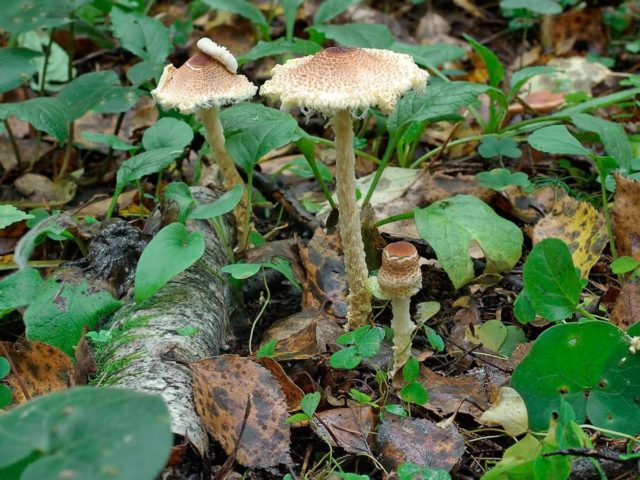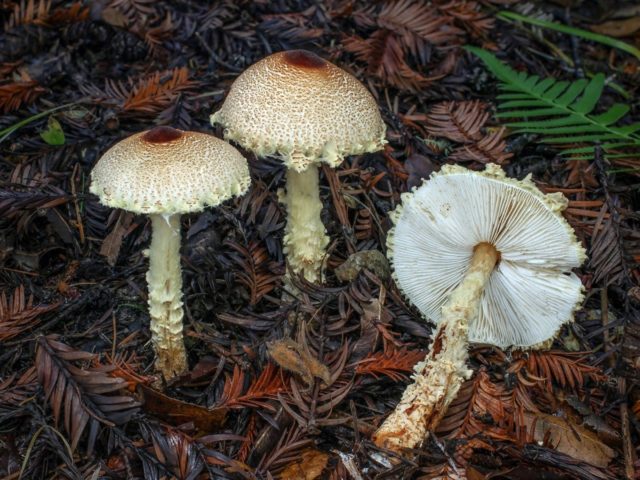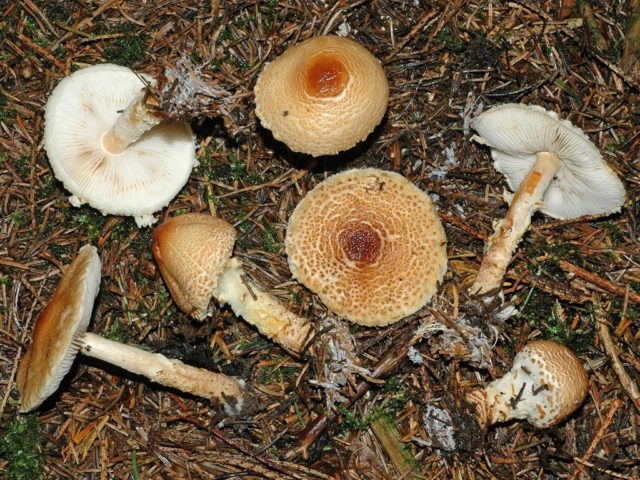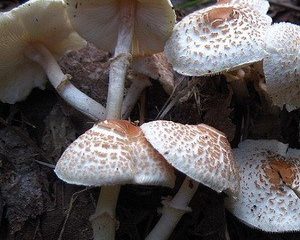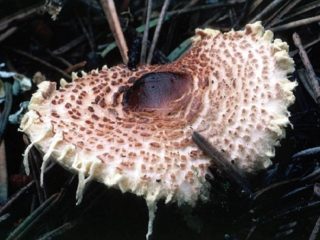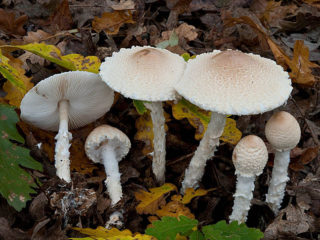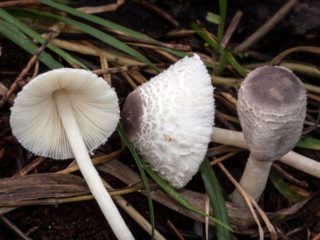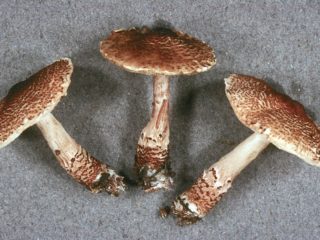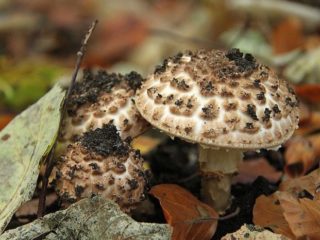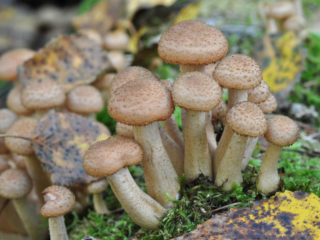Content
Lepiota magnispora is a mushroom from the Champignon family. I call it differently: yellowish scaly lepiota, inflamed silverfish.
Despite its attractiveness, this seemingly waspless representative is dangerous to life, since the fruiting body contains toxins.
What do Lepiotes swellspores look like?
There are a lot of umbrella mushrooms, among them there are many lepiots. Therefore, you need to learn to distinguish them by external signs.
The fruit body is distinguished by a small cap. At first it has the shape of a bell or half a ball. As it grows, it becomes prostrate.The diameter of this part is within 3-6 cm.
The surface is white-yellow, beige or reddish, and the crown is slightly darker. There are scales throughout the cap, which are clearly visible along the edge. The lower part of the fruiting body consists of plates. They are wide, loose, and light yellow in color. Young silverfish become pale yellow over time. The color of the spore powder is white.
Lepiota spores is distinguished by a thin stalk, the diameter of which is about half a centimeter. Height - 5-8 cm. They are hollow, young specimens have a white ring, which first becomes thin and then disappears altogether.
The surface is covered with scales, which are initially light and then darken. The inner part near the base is dark red or brown. In young representatives of the Champignon family, the entire leg is covered with a coating in the form of ocher flakes.
Where do Lepiota spores grow?
Where there are mixed or deciduous forests with moist soil, you can find Lepiota inflamosporus. These are summer-autumn mushrooms. The first fruiting bodies can please you with their appearance in September, before frost begins.
Is it possible to eat lepiotes spores?
All lepiot species have similarities, making them difficult to collect. Moreover, the genus has edible representatives. It is better for novice mushroom pickers to avoid collecting fruiting bodies that resemble umbrellas.
If we talk about the edibility of Lepiota spores, then different sources of opinion do not coincide. Some researchers claim that they can be eaten, while others classify representatives with umbrella-shaped caps as deadly poisonous.
Symptoms of poisoning
Regardless of the degree of poisonousness of lepiots spores, it is better not to collect them. Moreover, many sources indicate that there are no antidotes. When poisoned by mushrooms, a person experiences nausea, vomiting, and diarrhea. In some cases, the temperature rises.
First aid for poisoning
After calling an ambulance, the victim needs to provide first aid:
- Put him to bed.
- Give plenty of fluids to cleanse the intestines.
- After each intake of liquid, induce vomiting and drink water again.
- Give carbon tablets as a sorbent.
Conclusion
Lepiota spores is a poisonous inedible mushroom. Its use can be fatal. However, beautiful-looking silverfish should not be kicked, because they are part of living nature.
